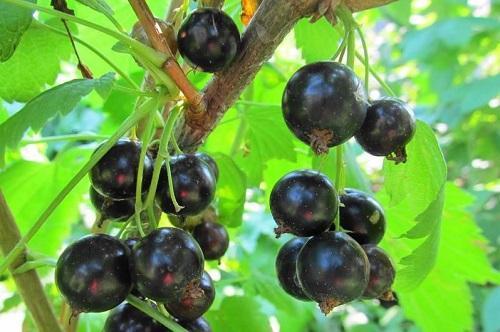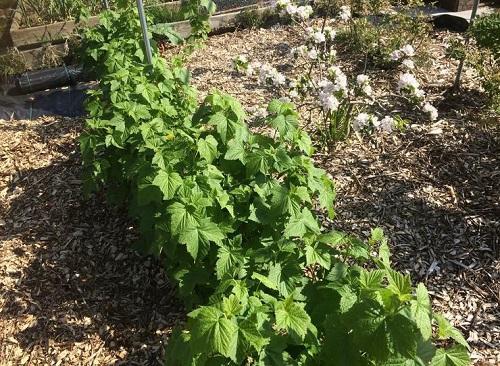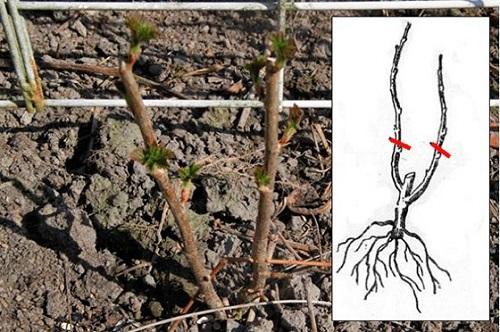Features of growing and caring for black currant
 In terms of vitamin content, black currant is the most useful berry among its other varieties. At the same time, it also requires more attention from gardeners: black currants have their own requirements for growing and care, including in spring.
In terms of vitamin content, black currant is the most useful berry among its other varieties. At the same time, it also requires more attention from gardeners: black currants have their own requirements for growing and care, including in spring.
Growing requirements

Black currants love sun, moisture and fertile soil. The best place to plant shrubs is in the south or southwest, that is, the side with good sun exposure. It should be borne in mind that this plant is afraid of drafts, and also often gets sick when groundwater is too close.
Black currant does not tolerate acidic soil, therefore, if such a phenomenon occurs, a year before the planned planting, it is necessary to dig up a site with the introduction of lime at the rate of 500 g per 1 sq. m.Immediately before landing in the planting pit, add superphosphate, ash and humus.
You can plant black currants in both spring and autumn, but most gardeners prefer the latter.
Spring care

To black currant pleased with a generous harvest of large berries, she needs to pay attention at the very beginning of the growing season. To do this, in the spring you should:
- Carry out pruning of bushes, removing all damaged branches and those on which pests (mites) have settled. In addition, pruning technology depends on the age of the shrub: young plants must be trimmed, leaving 3-4 buds. Two-year-old bushes are thinned out, leaving only about three strong shoots, and cutting the rest to soil level. The left shoots are shortened by cutting off a third of them. The procedure is repeated in the third year of life. In the future, when the bush is formed, it will only be necessary to cut out damaged and too old branches annually, and also partially remove young growth if there is too much of it.
- Water the plantings regularly, providing them with moisture, which currants love so much.
- To prevent diseases and pests, treat currants with Nitrafen.
- Feed with complex mineral fertilizers.
- Mulch the trunk circle to avoid rapid loss of moisture and the appearance of weeds.
With timely and correct spring activities, black currant will bear fruit with delicious berries for the next 10-15 years.
In the fall, they planted three bushes of black currant and raspberry. There are already leaves on the raspberries, and not a single bud on the currants. We are novice gardeners, so we planted strictly on the advice of specialists from the Internet. We live in France. The winter was warm, without snow. The place for the currants was chosen open, light. What to do now - in spring, to revive the currants? Thank you in advance
If the seedlings have not taken root, alas, they can no longer be helped. Bushes that have successfully wintered can be fed with nitrogen-containing fertilizers. They will help them start growing.
Olga, thank you very much for the advice! Fed with nitrogen-containing fertilizer and hurray! Our bushes have come to life! Thank!!!
I am glad that your plants are not lost and continue to grow. Good luck and good harvest!